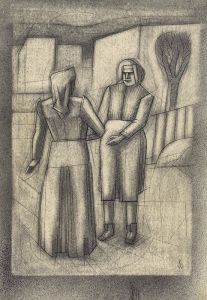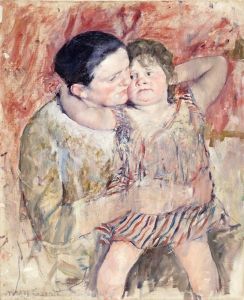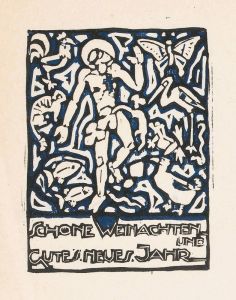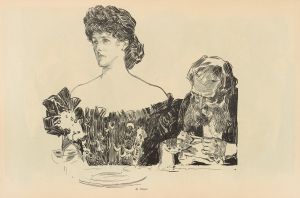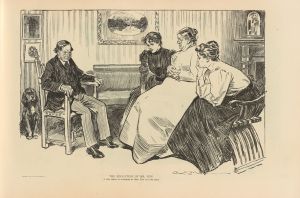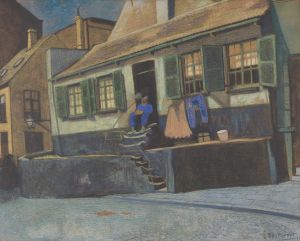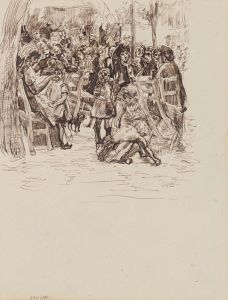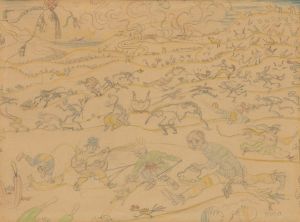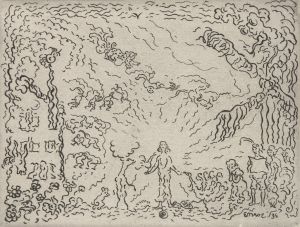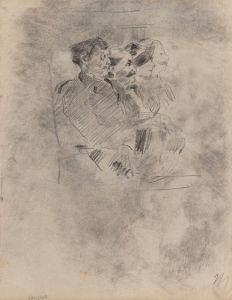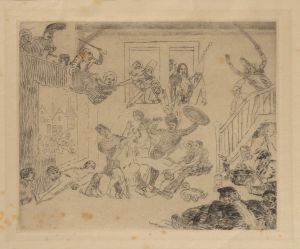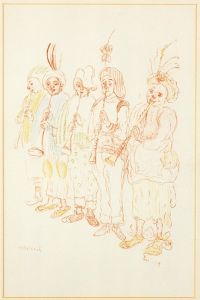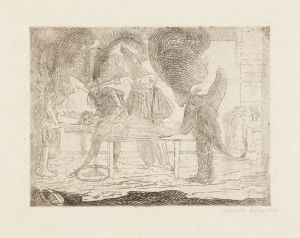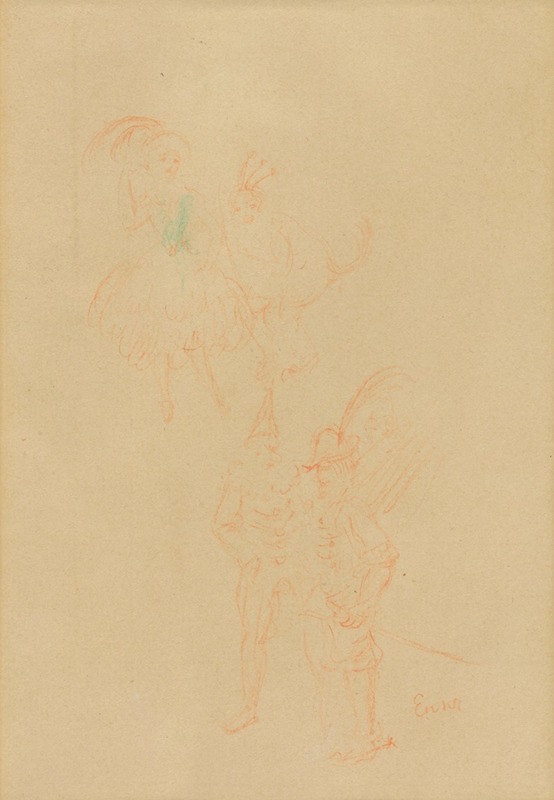
Figuren uit de liefdestuin
A hand-painted replica of James Ensor’s masterpiece Figuren uit de liefdestuin, meticulously crafted by professional artists to capture the true essence of the original. Each piece is created with museum-quality canvas and rare mineral pigments, carefully painted by experienced artists with delicate brushstrokes and rich, layered colors to perfectly recreate the texture of the original artwork. Unlike machine-printed reproductions, this hand-painted version brings the painting to life, infused with the artist’s emotions and skill in every stroke. Whether for personal collection or home decoration, it instantly elevates the artistic atmosphere of any space.
James Ensor, a prominent Belgian painter and printmaker, is known for his unique and often surreal style that blends elements of symbolism and expressionism. One of his notable works is "Figuren uit de liefdestuin," which translates to "Figures from the Garden of Love." This painting is a testament to Ensor's imaginative approach and his ability to convey complex themes through vivid imagery.
"Figuren uit de liefdestuin" was created during a period when Ensor was deeply engaged with themes of fantasy and the grotesque. His works from this time often feature a carnival-like atmosphere, populated by masked figures and fantastical creatures. This painting is no exception, as it depicts a whimsical scene filled with a variety of characters that seem to inhabit a dreamlike garden.
Ensor's use of color in "Figuren uit de liefdestuin" is particularly striking. He employs a vibrant palette that enhances the surreal quality of the scene. The bold and sometimes clashing colors contribute to the sense of chaos and exuberance that characterizes much of Ensor's work. This use of color is not merely decorative; it serves to heighten the emotional impact of the painting and draw the viewer into its fantastical world.
The composition of "Figuren uit de liefdestuin" is complex and layered, with figures overlapping and interacting in a way that suggests movement and vitality. Ensor's skillful use of perspective and space creates a sense of depth, inviting the viewer to explore the various elements of the scene. The figures themselves are rendered with a mix of realism and caricature, a hallmark of Ensor's style that allows him to explore themes of identity and the human condition.
Ensor's fascination with masks and disguise is evident in "Figuren uit de liefdestuin." Many of the figures in the painting are depicted wearing masks, a motif that Ensor frequently used to comment on the nature of identity and the facades people present to the world. This theme is further emphasized by the garden setting, which can be seen as a metaphor for a space where societal norms are suspended, and hidden desires and truths are revealed.
The painting also reflects Ensor's interest in the interplay between the sacred and the profane. The garden, traditionally a symbol of paradise and love, is populated by figures that are both playful and sinister, suggesting a tension between innocence and corruption. This duality is a recurring theme in Ensor's work, reflecting his view of the world as a place of both beauty and absurdity.
"Figuren uit de liefdestuin" is an exemplary piece that showcases James Ensor's distinctive artistic vision. Through its vibrant colors, dynamic composition, and rich symbolism, the painting invites viewers to delve into a world where reality and imagination intertwine. Ensor's ability to capture the complexities of human experience in such a visually arresting manner has secured his place as a significant figure in the history of modern art.





